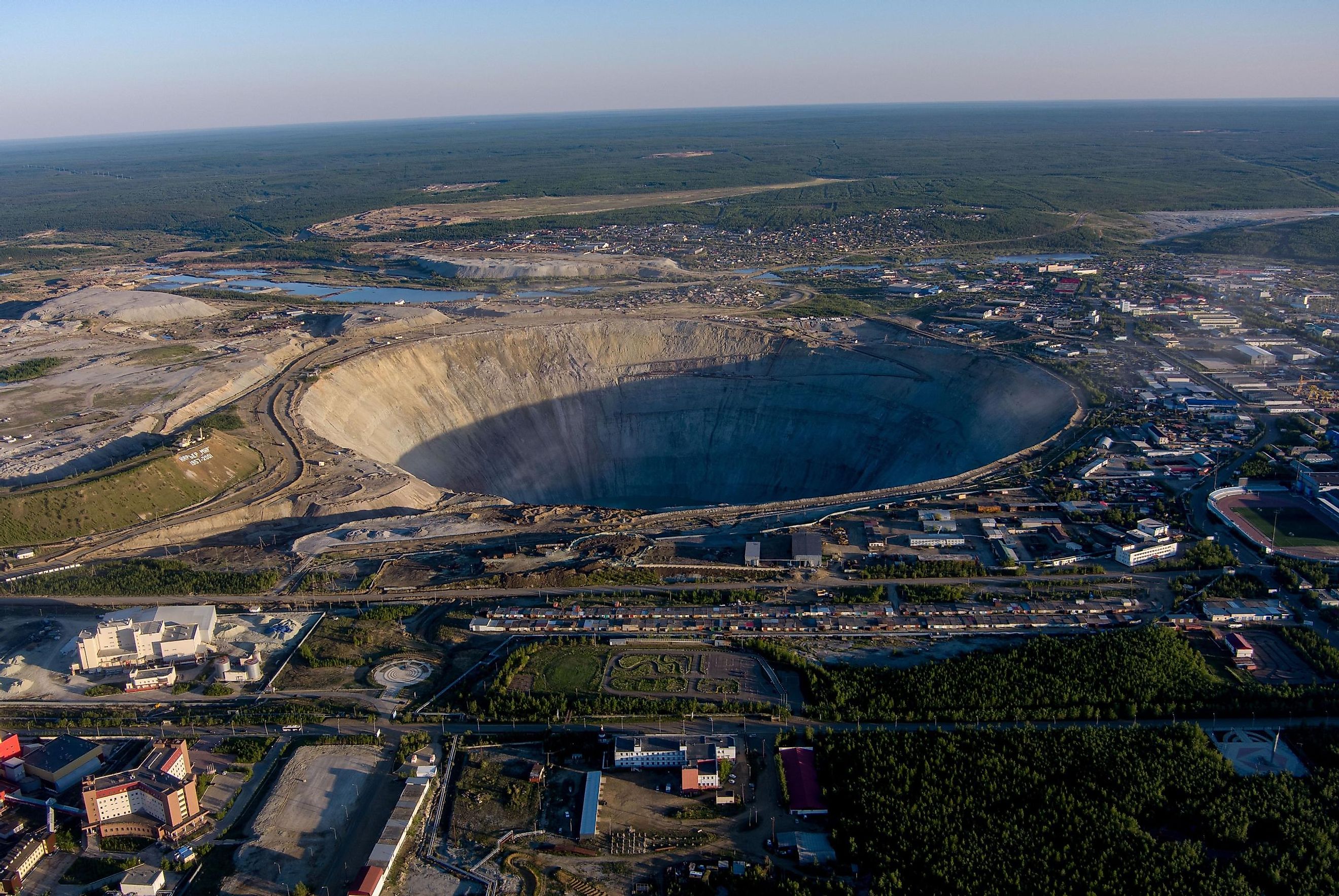
The 10 Largest Diamond Mines In The World
Diamonds sit deep underground within an igneous rock, kimberlite, which is brought closer to the earth’s surface when a volcanic-type kimberlite eruption takes place. Two main techniques—open-pit and underground—are employed to access the world's diamond deposits. No, we are not talking about expensive diamond rings—well, not exactly. Diamonds are the "world’s hardest substance," or seventh-hardest if speaking scientifically. Around 50% of the world’s diamonds are for industrial use, like grinding, where diamonds' value comes from their hardness and heat conductivity to cut, drill, and polish, while only about 20% of the world’s mined diamonds are gem-quality.
An average of 171 million carats of diamonds were produced annually between 2005 and 2008. World production averaged 132 million from 2011 until 2019, which is the year it once again increased to 142 million. Russia, with 19 million, and Australia, with 13 million, produced the most diamonds in 2019. Since diamonds are an underground natural resource, it is only logical that Russia, the largest country covering the most land, has the most diamond reserves and many of the world's ten biggest diamond mines. Approximately 90% of the world’s diamonds come from the world's 50 largest mines, with a closer look at the ten largest diamond mines below.
1. Aikhal, Russia
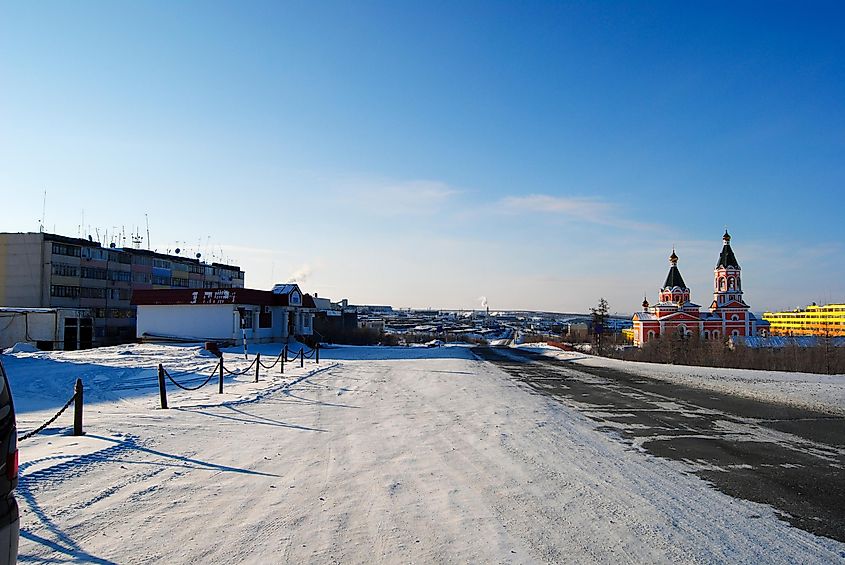
The Russian Aikhal mine, meaning "fame," is the largest diamond mine in the world. It is located in Sakha, Yakutia, to the east of the Russian Republic. As of July 2018, Aikhal contains an estimated 175.56 million carats (Mct) of reserves that are proven and probable. Initially an open pit mine from 1961 to 1997, it switched to underground mining using the "cut-and-fill" method. Aikhal yields from deposits of the Aikhal Pipe, Zaria Pipe, Komsomolskaya Pipe, and Jubilee Pipe, with the latter two mined through open-pit methods.
Jubilee Pipe, at a depth of 390m, will eventually reach 720m, while Zaria was under development in the last few years to be mined through open-pit methods in 2021. With an annual production of around 1.3 million carats, the Aikhal mine accounts for a third of global rough diamond production. It is owned and operated by Aikhal Mining, one of the biggest mining companies in the world, and the processing division of the Russian diamond company Alrosa, a partially state-owned diamond mining company.
2. Jwaneng, Botswana
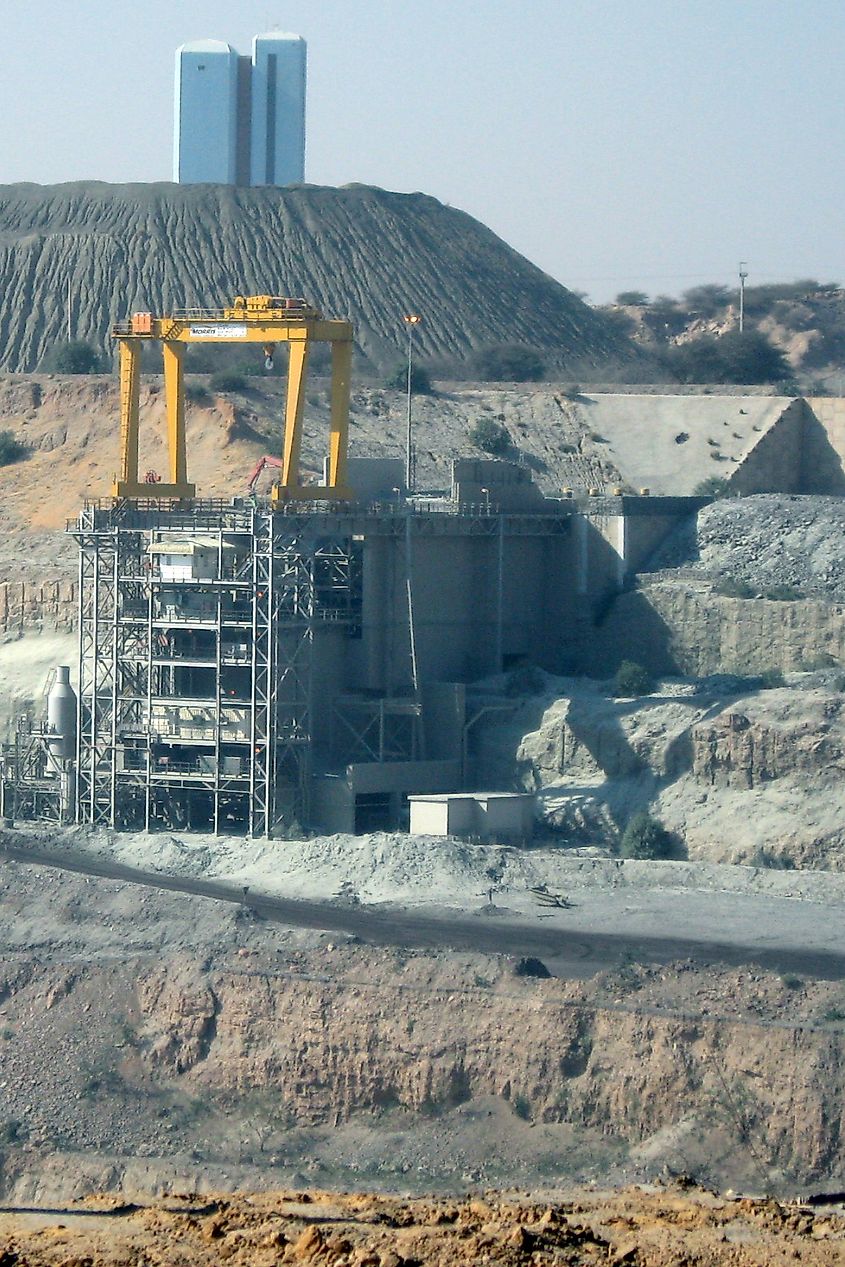
Owned in a 50:50 partnership by the national government and De Beers Group, Jwaneng is the world's second-largest diamond mine. Located south of Botswana, 160 miles southwest of Gaborone, in the Kalahari Desert, it yields about 350 meters underground. Yet to reach its full depth of 625m, it is operated by De Beers Group, the biggest mining company in the world. The mine produced an estimated 13.5 million carats of diamonds in 2022 and contributes to 70% of Debswana’s revenues.
Jwaneng is an open-pit mine in use since 1982, with an annual production considerably higher than that of the Aikhal mine, which makes it more valuable. In 2021, Jwaneng produced 18.6 million carats of diamond and some 10.17 million metric tons of run-of-mine (ROM). In 2018, it possessed 166.6 million proven and probable diamond reserves. Due to operate until 2036, Jwaneng is the richest mine in the world based on value, while its name translates as "place of small stones."
3. Udachny, Russia
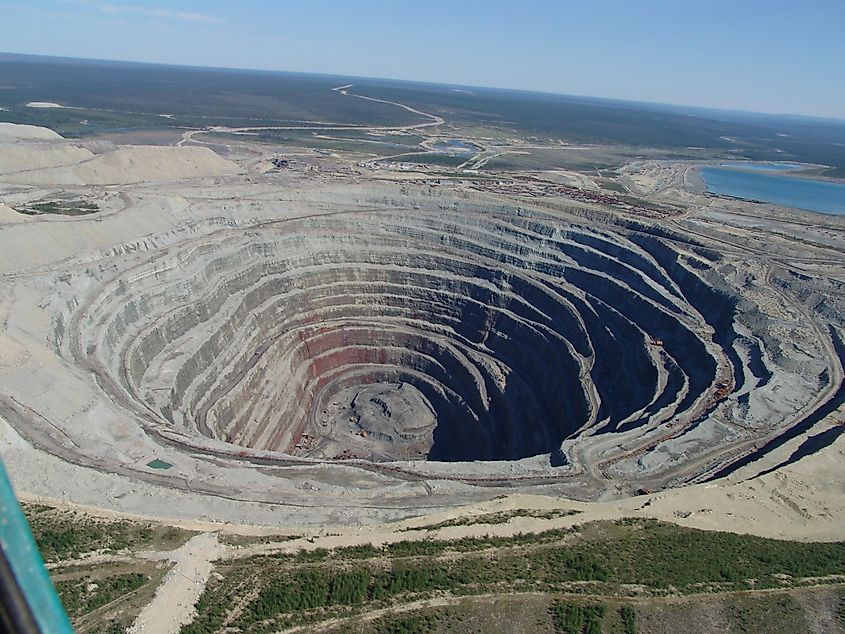
Udachny, meaning "lucky" in Russian, is located near the namesake town in the Sakha Republic in the Yakutia region of Russia and is owned by Alrosa Mining. With reserves of 164 million carats, Udachny, just shy of Jwaneng, is the world's third-largest diamond mine. Upon noticing a near-depletion of its resources, Alrosa developed underground mining at Udachny, which was commissioned in June 2014 and carried out in parallel until the open pit was exhausted in 2016.
Udachny was discovered in June of 1955 and began mining in 1971, while by 1976, the first stage of the mining and processing complex was commissioned. Its deposit mining pipe, yielding some nine percent of Alrosa’s total output, is part of the Udachnaya Mining Processing Division (UMPD), which was established in 1979. Udachniy, a greenfield mine, produced an estimated 3.74 million carats of diamond in 2022 and aims to become the largest underground diamond mine in the country once it reaches full depth.
4. Jubilee, Russia
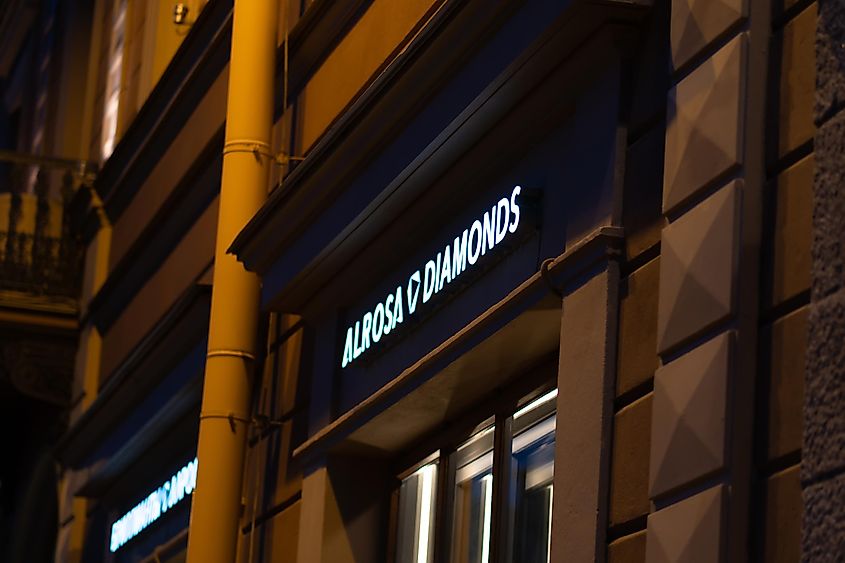
"Yubileyny" in Russian, this open-pit diamond mine in Sakha (Yakutia), Republic of Russia, is among the biggest in the world. It had an estimated 153 million carats of recoverable diamonds, 51 million of which are probable underground reserves as of January 2013. Since 1986, Jubilee has been owned and operated in a partnership between the Aikhal mining and processing division of Alrosa, Russia’s state-owned diamond company.
In 2012, the Jubilee diamond mine produced 10.4 metric tons of ore at a depth of 320m, with plans to expand to 720m. As of July 2013, its Yubileynaya kimberlite pipe contains around 107.163 million metric tons (Mt) of probable reserves. At the time, Jubilee was the largest diamond mine in the world, and in 2022, it produced an estimated 4.99 million carats of diamonds.
5. Nyurba, Russia
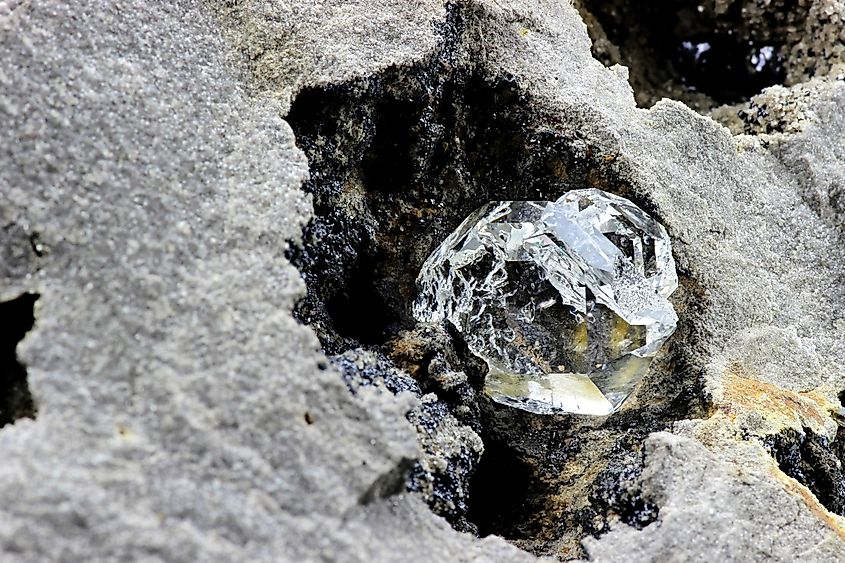
Another open-pit Russian mine, Nyurba, mines from three deposits: Nyurbinskaya Pipe, Botuobinskaya Pipe, and Maiskoye Kimberlite Body. Altogether, they hold a total of some 133 million proven and probable reserves as of July 2018, making Nyurba the fifth largest in the world. Nyurbinskaya Pipe commenced open pit mining in 2000 and is now mining at midway of its projected final depth of 750 meters.
The Botuobinskaya pipe, 3km south of the Nyurbinskaya, commenced in 2014 with overburden removal and has been producing since 2015. The Maiskoye kimberlite, 3km south of the Botuobinskaya pipe, has plans to be mined through open-pit methods, with development scheduled for 2022.
6. Orapa, Botswana
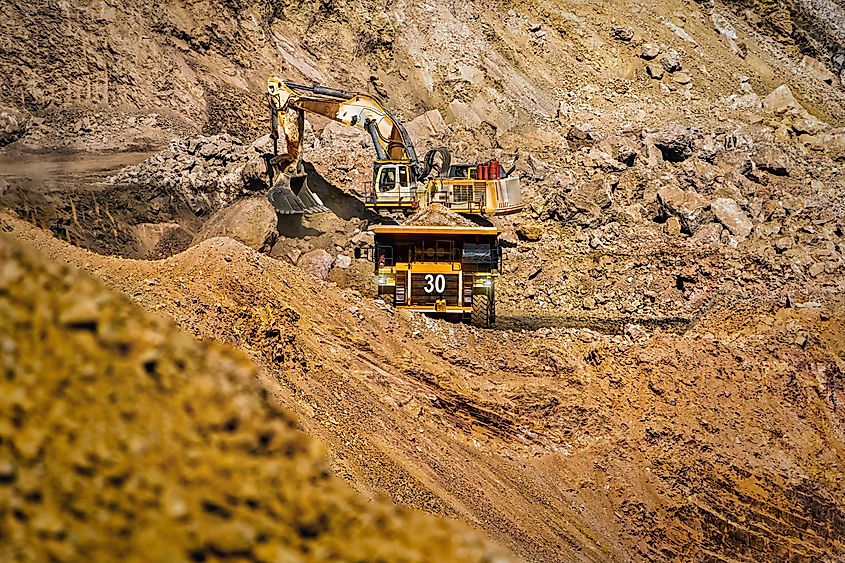
Owned by Debswana, a partnership between De Beers and the Botswana government, Orapa, a conventional open-pit mine, has been producing since 1971 with an estimated 131.2 million metric tons of proven and probable reserves in 2018 and is set to run until 2036. Operated by Debswana, the surface mine in Botswana’s Central District, 240 km west of Francistown, is the oldest of the four in the country. Previously mined at 305m, it is expected to reach 350m by 2026. It is being studied to extend its life through a new open-pit named Cut 3 and mining activities under the project to 2030. The mine consists of a volcanic pipe split into two distinct north and south pipes at depth.
The sixth-largest mine yielded almost 20 million tons, about 10.6 million carats recovered in 2021, and 8.85 million carats of diamond in 2022. Having erupted through Transvaal strata and the overlying Karoo sediments over 200 million years ago, Orapa, discovered in 1967 by De Beers geologists with the lead of Manfred Marx, has been producing, on average, 10 million carats per year. It was fully operational after His Excellency Sir Seretse Khama, former President of Botswana, opened the mine in 1971. The nearby small, closed town with 12,000 locals serves as the administrative center for the mine and two others.
7. Catoca, Angola

This open-pit diamond mine, with an estimated up to 130 million carats of mineable diamonds, is the seventh-largest in the world. In operation since 1993, the Catoca mine produces three-quarters of Angola’s total diamond output. In 2016, Catoca produced about 7.65 metric tons of diamonds from approximately 11.42 metric tons of ore and is due to operate until 2037.
Located near Saurimo, some 840km east of Luanda, Angola, it is operated at depths exceeding 245m in a joint venture. It is under the same Sociedade Mineira de Catoca ownership, shared by Angola’s state-owned diamond company Endiama, Alrosa, and the China-based company Lev Leviev International.
8. Ekati, Canada
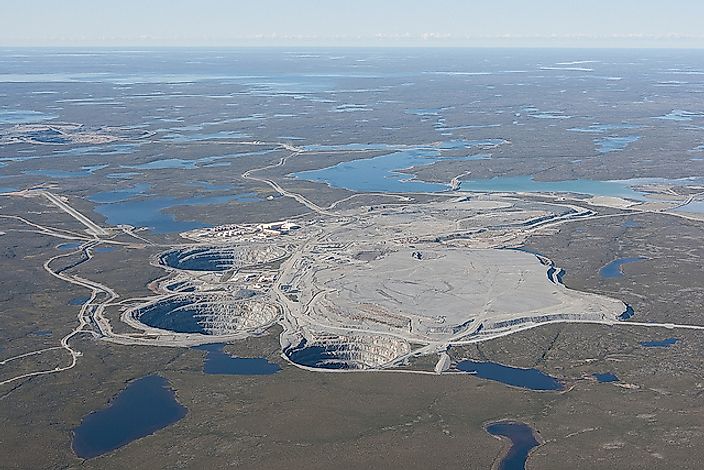
The Ekati diamond mine in the Lac de Gras region of the Northwest Territories in Canada is the country’s first open-pit and underground diamond mine. It was discovered in 1991 and started production in 1998, with an estimated 105.4 million metric tons of proven and probable reserves as of January 2017. Ekati produced 67.8 mct in January 2017, with a projected life span of up to 2034. The world's eighth-largest diamond mine is owned and operated by Dominion Diamond Mines.
During the early years of development, its mining activities were focused on six surface mines and three underground mines. Currently, only the Koala, Lynx, Misery, Pigeon, and Sable are operational, where the Lynx, Pigeon, and Sable are open-pit methods, and the Koala is underground, while the Misery is to be converted into an underground operation. The greenfield mine plans to develop several deposits—Fox Deep and Jay—to extend its life to 2042.
9. Venetia Diamond Mine, South Africa

Venetia is one of the country's biggest diamond-producing mines, with 4.2 million tons of diamonds yielded in 2018. Located 80km from Musina in the South African province of Limpopo, the Venetia diamond mine holds over 92.4 million metric tons of diamond reserves as of December 2018. The greenfield mine using surface and underground mining produced an estimated 5.83 million carats of diamonds in 2022.
The world's ninth-biggest mine is operated by De Beers, with deposits from 12 kimberlite pipes mining from 450m over an area of 3.8ha. Venetia began excavating for future underground operations in 2013, and by 2018, its decline tunnel had reached a depth of 2,400m. With open-pit operations to continue up to 2021 and production from the underground mine planned to commence in 2022, the promising mine is expected to extend its life until 2046.
10. Mir, Russia
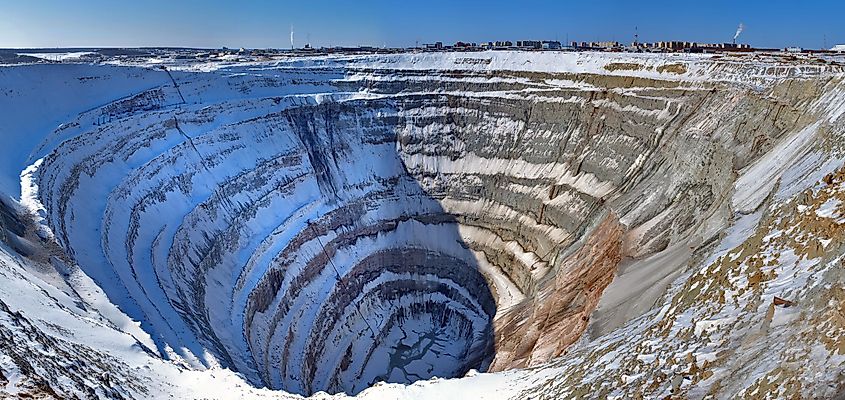
Mir, or Mirny, meaning "peace," is an underground diamond mine in Russia with an estimated 57.77 mct of proven and probable diamond reserves as of July 2018. Owned and operated by Alrosa's Mirny Mining, it was discovered in 1955 and began open-pit mining in 1957. Although Mir closed after depletion in 2001, underground mining commenced in 2009, extracting diamond ore from the Mir kimberlite pipe and the International pipe.
The tenth-largest mine used open-pit methods until 2011 when it switched to underground cut-and-fill mining methods in three stages. In August 2017, an accident and subsequent flooding of the mine halted Mir's production, but Alrosa, reviewing the development for safe mining operations, has plans to resume it after 2030. The mine extracted from the Irelyakh, Gornoye, and Vodorazdelnye Galechniki placer deposits using open-pit mining methods.
Honorable Mention: Kao, South Africa
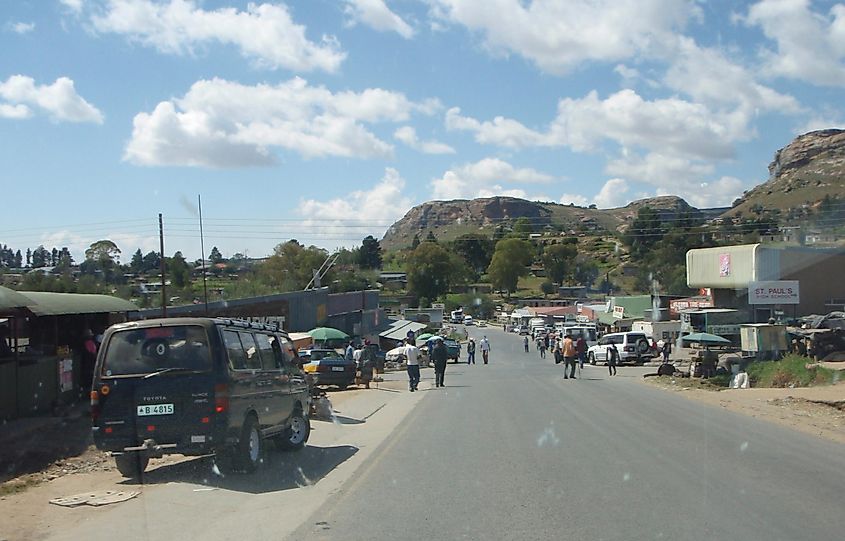
Storm Mountain Diamonds just got 108.39 carats richer after extracting a fancy, intense pink diamond from the Kao mine in Lesotho, in Butha-Buthe, Botswana. The type IIa diamond recovered on March 23, 2023, is one of the largest pink diamonds in the history of mining. This most significant find, according to Mohlomi Moleko, minister of natural resources for Lesotho, beats the previously discovered Pink Eternity, a 47.80-carat stone found in October last year.
Operated in a joint venture between Namakwa Diamonds and the Lesotho government, Kao is among the largest diamond mines in the world, producing an estimated 13.34 million carats of diamonds in 2022. The same deposit yielded high-value rose-colored gems like the 29.59-carat Rose of Kao, the 25.97-carat Pink Dawn, and the 21.86-carat Pink Palesa. Under the ownership of Namakwa Diamonds Limited, Kao has an approximately 18-year lifespan ahead of it and reserves some 13.4 million carats before exhaustion.
These largest diamond mines on the planet hold plentiful reserves for the next 20–30 years, while additional large, functioning diamond mines are sprouting up across the globe. Gahcho Kue is one of the newest mines and the largest of its kind in the last thirteen years. It was developed near the Arctic Circle as a joint venture between De Beers Canada and Mountain Province Diamonds, with the potential to make up for the recent loss of production at Canadian mines. Just as owning jewelry with finished-cut diamonds can make a person feel richer and happier, diamond reserves and mines are part of the national prosperity status.
With diamonds treated and shipped globally, the country yields wealth that makes up for the resources put into mining and more to invest in other areas requiring development. Will diamonds and diamond mines hold as much relevance in the future? Having been in the dumps since the 2008 global financial crisis, the diamond mining industry remains a significant contributor to the country's GDP. Natural resources will always be relevant to the countries fortunate to have many while as one of the most valued and expensive underground natural resources, as long as the diamonds the reserves produce, their significance in the world will not fall indefinitely.











